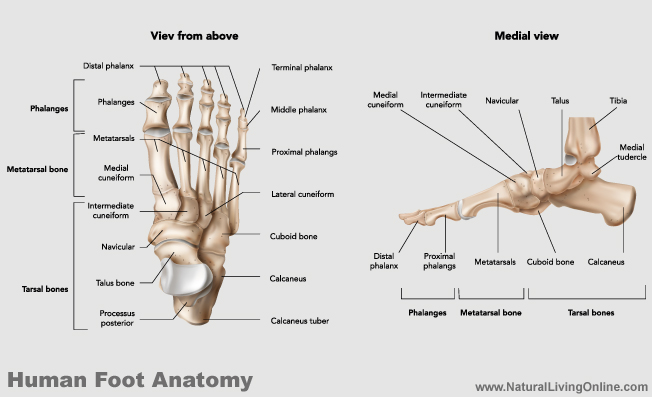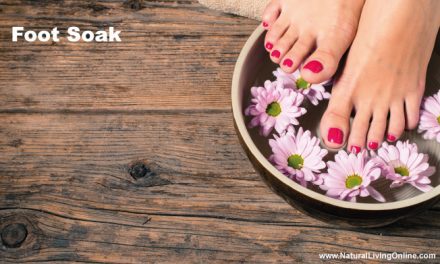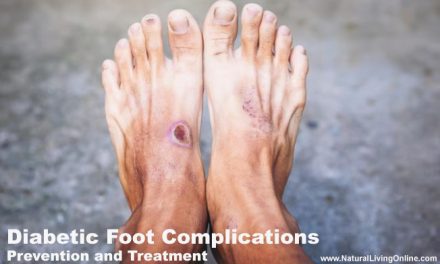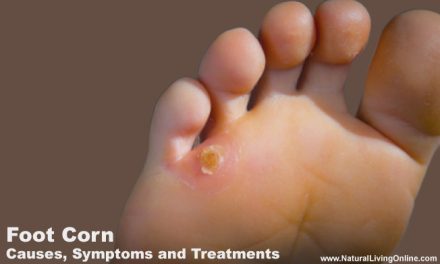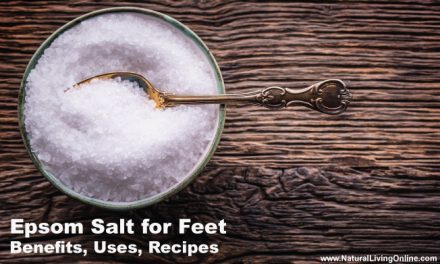When it comes to physical health, we often forget the importance of our feet, and how they impact our daily lives. They allow us to stand, walk, run, and maintain our balance. However, when foot pain strikes, it can be incredibly debilitating, affecting our mobility and quality of life. In this blog post, we will discuss the common causes of foot pain, how to prevent it, and how to treat it effectively.
Common Causes of Foot Pain
The foot is a complex structure consisting of bones, joints, ligaments, and muscles, which work together to support the body’s weight and enable movement. There are many different causes of foot pain, ranging from injuries and overuse to medical conditions such as arthritis and diabetes. Here are some of the most common causes of foot pain:
Achilles tendinitis
Achilles tendinitis is an inflammation of the Achilles tendon, which connects the calf muscle to the heel bone. This condition is usually caused by overuse, particularly in athletes who engage in repetitive activities such as running or jumping. Symptoms include pain, stiffness, and swelling in the back of the calf muscles and the heel, and treatment may involve rest, ice, physical therapy, and medication.
Achilles tendon rupture
An Achilles tendon rupture is a tear in the Achilles tendon that can result from sudden trauma or chronic overuse. Symptoms include a sudden, sharp pain in the back of the heel, and treatment may involve surgery, immobilization, and physical therapy.
Avulsion fracture
An avulsion fracture is a type of foot fracture that occurs when a tendon or ligament pulls a small piece of bone away from the main bone. This condition is often caused by sudden, forceful movements or trauma. Symptoms include severe foot pain, swelling, and difficulty moving the affected area, and treatment may involve rest, immobilization, and surgery.
Bone spurs
Bone spurs are bony projections that can develop along the edges of bones, particularly in areas that experience frequent stress or pressure. They can cause pain and discomfort in the affected area, and treatment of heel spurs may involve physical therapy, medication, and surgery.
Broken ankle
A broken ankle is a fracture of one or more of the bones in the ankle joint resulting severe ankle pain. Ankle fractures is often caused by trauma, such as a fall or a sports injury. Symptoms include pain, swelling, and difficulty walking, and treatment may involve immobilization, physical therapy, and surgery.
Broken foot
A broken foot is a fracture of one or more of the bones in the foot. This condition is often caused by trauma or overuse, and symptoms include pain, swelling, and difficulty walking. Treatment may involve immobilization, physical therapy, and surgery.
Broken toe
A broken toe is a fracture of one of the toes. This condition is often caused by trauma or overuse, and symptoms include pain, swelling, and difficulty walking. Treatment may involve immobilization, physical therapy, and surgery.
Bunions
Bunions are bony bumps that develop on the joint at the base of the big toe. They are often caused by an inherited foot structure or wearing tight, narrow shoes. Symptoms include pain, swelling, and difficulty walking, and treatment may involve wearing wider shoes, using orthotics, and surgery.
Bursitis
Bursitis is an inflammation of the bursae, which are fluid-filled sacs that cushion the joints. This condition can occur in any joint in the body, including the foot. Symptoms include pain, stiffness, and swelling, and treatment may involve rest, ice, medication, and physical therapy.
Corns and calluses
Corns and calluses are thickened areas of skin that develop in response to friction or pressure. They can cause pain and discomfort, particularly when walking or wearing shoes. Treatment may involve wearing wider shoes, using orthotics, and wearing foot pads or cushions to protect the affected area.
Diabetic neuropathy
Diabetic neuropathy is a type of nerve damage that can occur in people with diabetes. It can cause pain, numbness, and tingling in the feet and other areas of the body. Treatment may involve managing blood sugar levels and medication to control symptoms.
Flatfeet
Flatfeet is a condition in which the arches of the feet are lower than normal or absent. This can cause pain and discomfort in the feet, legs, and lower back, as well as difficulty walking or standing for long periods of time. Treatment may involve wearing supportive shoes or orthotics, physical therapy, and surgery in severe cases.
Gout
Gout is a type of arthritis caused by a buildup of uric acid crystals in the joints. It can cause sudden, severe pain and swelling in the affected joint, often in the big toe. Treatment may involve medication to control pain and inflammation, lifestyle changes to reduce uric acid levels, and avoiding trigger foods.
Haglund’s deformity
Haglund’s deformity is a bony enlargement on the back of the heel that can cause pain and discomfort when wearing shoes. This foot deformity often caused by wearing tight, rigid shoes or by an inherited foot structure. Treatment may involve wearing wider shoes, using orthotics, and surgery in severe cases.
Hammertoe and mallet toe
Hammertoe and mallet toe are deformities of the toes in which the joints become bent and stuck in a curled position. They can cause pain and discomfort, particularly when wearing poor fitting shoes. Treatment may involve wearing wider shoes or using orthotics, physical therapy, and surgery in severe cases.
Ingrown toenails
Ingrown toenails occur when the toenail grows into the surrounding skin, causing pain and discomfort. They are often caused by improper nail trimming or wearing narrow toed shoes. To relieve pain soak the affected area in warm water, gently lifting the nail, and using antibiotics if an infection develops.
Metatarsalgia
Metatarsalgia is a condition in which the ball of the foot becomes painful and inflamed. It can be caused by overuse, wearing poorly fitting shoes, or an inherited foot structure. Treatment may involve wearing wider shoes or using orthotics, rest, ice, and physical therapy.
Morton’s neuroma
Morton’s neuroma is a painful condition that occurs when a nerve in the foot becomes compressed or inflamed. It can cause pain, tingling, and numbness in the ball of the foot and toes. Treatment may involve wearing wider shoes or using orthotics, physical therapy, and surgery in severe cases.
Osteoarthritis
Osteoarthritis is a type of arthritis caused by wear and tear on the joints. It can cause pain, stiffness, and swelling in the affected joint, and can occur in any joint in the body, including the feet. Treatment may involve medication, physical therapy, and surgery in severe cases.
Osteomyelitis
Osteomyelitis is a bacterial infection of the bone that can occur in any bone in the body, including the feet. It can cause pain, swelling, and redness in the affected area, and treatment may involve antibiotics, surgery, and immobilization.
Peripheral neuropathy
Peripheral neuropathy is a type of nerve damage that can occur in the feet and other areas of the body. It can cause pain, numbness, and tingling in the affected area, and may be caused by diabetes, alcoholism, or other medical conditions. Treatment may involve managing underlying conditions and medication to control symptoms.
Plantar fasciitis
Plantar fasciitis is an inflammation of the plantar fascia, a band of tissue that runs along the bottom of the foot. It can cause pain and stiffness in the heel and arch of the foot, particularly in the morning or after long periods of standing or walking. Treatment may involve rest, ice, physical therapy, stretching exercises, orthotics, and in severe cases, surgery.
Plantar warts
Plantar warts are small growths caused by the human papillomavirus (HPV) that develop on the soles of the feet. They can cause pain and discomfort when walking, and may spread if left untreated. Treatment may involve topical medications, cryotherapy, or laser therapy.
Psoriatic arthritis
Psoriatic arthritis is a type of arthritis that can develop in people with psoriasis. It can cause pain, swelling, and stiffness in the joints, including the feet. Treatment may involve medication to control symptoms and manage underlying conditions, as well as physical therapy and surgery in severe cases.
Retrocalcaneal bursitis
Retrocalcaneal bursitis is an inflammation of the bursa, a fluid-filled sac located at the back of the heel. It can cause pain and swelling in the affected area, particularly when wearing tight shoes. Treatment may involve rest, ice, physical therapy, and in severe cases, surgery.
Rheumatoid arthritis
Rheumatoid arthritis is a type of autoimmune disease that can cause pain, stiffness, and swelling in the joints, including the feet. It can also cause deformities in the feet and hands. Treatment may involve medication to control symptoms and manage underlying conditions, as well as physical therapy and surgery in severe cases.
Stress fractures
Stress fractures are small cracks in the bones that can occur from repetitive stress, such as from running or jumping. They can cause pain and swelling in the affected area, and may require rest and immobilization to heal.
Tarsal tunnel syndrome
Tarsal tunnel syndrome is a condition in which the tibial nerve becomes compressed as it passes through a narrow tunnel in the ankle. It can cause pain, tingling, and numbness in the affected area, and may be caused by overuse, injury, or an inherited foot structure. Treatment may involve rest, ice, physical therapy, and in severe cases, surgery.
Tendinitis
Tendinitis is an inflammation of a tendon, which can cause pain and stiffness in the affected area. It can occur in any tendon in the body, including those in the feet. Treatment may involve rest, ice, physical therapy, and in severe cases, surgery.
Prevention
Foot pain can be a frustrating and debilitating condition that affects many people, but there are several steps that can be taken to prevent it from occurring. Here are some ways to prevent foot pain:
- Proper footwear and its importance: Wearing proper footwear is crucial for preventing foot pain. Shoes that fit well, provide adequate support, and have a comfortable insole can help to prevent common foot problems such as blisters, calluses, and corns. It is also important to choose shoes that are appropriate for the activity you are engaging in, whether it is running, walking, or playing sports. Wearing shoes with good arch support can help to prevent conditions like plantar fasciitis and flat feet. In addition, it is important to replace old or worn out shoes to maintain proper support and cushioning.
- Importance of exercise and stretching: Regular exercise and stretching can help to prevent foot pain by improving flexibility and strengthening the muscles and tendons in the feet. Activities like walking, running, and cycling can help to improve circulation and reduce the risk of conditions like peripheral neuropathy. Stretching the calves, ankles, and toes can help to prevent conditions like Achilles tendinitis and plantar fasciitis.
- Maintaining a healthy weight: Excess weight can put additional strain on the feet, leading to conditions like plantar fasciitis and stress fractures. Maintaining a healthy weight through a balanced diet and regular exercise can help to prevent foot pain and improve overall health.
- Tips for proper foot care and hygiene: Proper foot care and hygiene are important for preventing foot pain and maintaining healthy feet. Some tips include:
- Keeping feet clean and dry, especially between the toes.
- Moisturizing the feet regularly to prevent dry skin and cracking.
- Trimming toenails straight across and avoiding cutting them too short or rounding the edges to prevent ingrown toenails.
- Wearing socks made of breathable materials to reduce moisture and prevent fungal infections like athlete’s foot.
- Avoiding walking barefoot in public areas like locker rooms and showers to prevent fungal infections and plantar warts.
In general, preventing foot pain involves a combination of proper footwear, regular exercise and stretching, maintaining a healthy weight, and proper foot care and hygiene. Taking these steps can help to prevent common foot problems and improve overall foot health.
Treatment of Foot Pain
Foot pain can be a frustrating and debilitating condition that can affect daily activities. Treatment for foot pain depends on the underlying cause of the pain. Here are some common treatment options for foot pain:
- Non-surgical options: For minor foot pain, non-surgical options may be effective in reducing pain and inflammation. Resting the affected foot, applying ice to the affected area, and elevating the foot above heart level can help to reduce swelling and pain. Wearing a compression bandage or using a compression sock can also help to reduce swelling and improve circulation in the affected area.
- Medications and orthotics: Medications like nonsteroidal anti-inflammatory drugs (NSAIDs) and acetaminophen can help to reduce pain and inflammation associated with foot pain. Orthotics like arch supports, shoe inserts, and custom-made orthotics can help to provide support and cushioning to the feet, reducing pain and preventing further damage.
- Physical therapy and exercise: Physical therapy and exercise can be effective for treating foot pain, especially for conditions like plantar fasciitis and Achilles tendinitis. Physical therapy may include stretching exercises, massage, and other techniques to improve flexibility, strength, and mobility in the feet. Exercise like walking and swimming can also be effective in reducing pain and improving overall foot health.
- Surgical options: In more severe cases of foot pain, surgical options may be necessary. Surgery may be recommended for conditions like bunions, hammertoes, and plantar fasciitis that do not respond to non-surgical treatments. Surgical options may include removing bone spurs, repairing tendons and ligaments, and realigning bones in the feet.
- Foot Soak: Foot soaks can be an effective home treatment remedy for foot pain, especially if the pain is caused by conditions like plantar fasciitis, gout, or arthritis. Foot soaks can help to reduce pain and inflammation, soothe tired and achy feet, and improve overall foot health.
In conclusion, foot pain can have a significant impact on our daily lives, making it important to take care of our feet and seek medical attention when needed. Some common causes of foot pain include plantar fasciitis, bunions, and stress fractures, among others.
There are various preventive measures that we can take to reduce the risk of foot pain, such as wearing proper footwear, maintaining a healthy weight, and practicing good foot hygiene. Home treatment remedies such as foot soaks can also be effective in reducing pain and inflammation.
If foot pain persists or becomes severe, it is important to seek medical attention from a healthcare professional, who can recommend a treatment plan that is tailored to the individual’s needs. This may involve non-surgical options such as rest, ice, and medication, or more severe cases may require surgery.
In general, it is important to prioritize foot health in our daily lives to prevent foot pain and maintain overall well-being. This may involve incorporating foot exercises and stretches into our daily routine, wearing comfortable and supportive shoes, and seeking medical attention when needed. By taking care of our feet, we can reduce the risk of foot pain and enjoy a more active and comfortable lifestyle.
References
Foot Pains & Problems – Johns Hopkins Medicine
This website does not provide medical advice.
All information provided on this website, and on associated social media networks, including but not limited to texts, images, and numbers are for general information purpose only. It is not intended as medical advice and it does not include all possible precautions, side effects, or interactions that may occur. Neither NaturalLivingOnline.com nor its author/founder take responsibility for how you use this information. Statements contained on NaturalLivingOnline.com have not been evaluated by the FDA. You should conduct thorough research via multiple sources and consult your physician or qualified doctor before using any essential oil or herbal remedy. Information on NaturalLivingOnline.com must not be relied upon for medical, legal, financial or other decisions.

